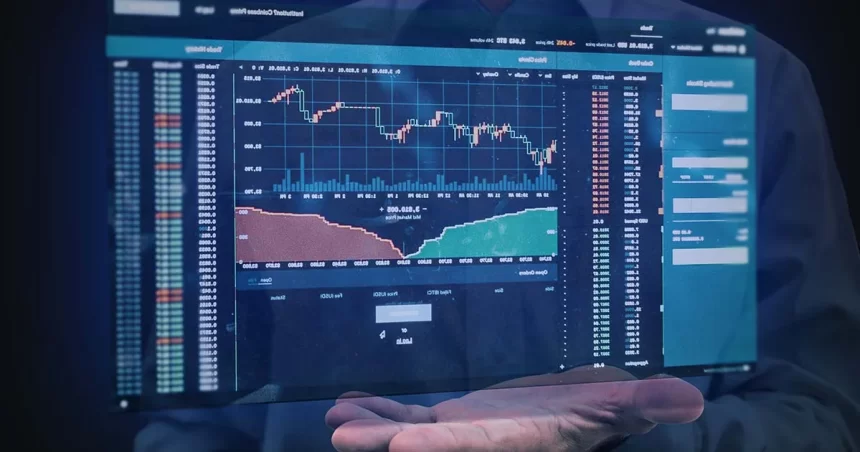We are living in an increasingly digitised world, where people from across the globe can collaborate and communicate instantaneously.
And, to no one’s surprise, this phenomenon also applies to the stock investment and business world.
If you’re from Australia, for instance, it won’t take too much time and effort to open up a brokerage account and start trading stocks from the US, Japan, and Europe—and vice versa.
That said, if you’re still new to the world of stock trading, it can be overwhelming to set up a brokerage account based in your own country, more so for one based overseas.
But if you want to expand your portfolio’s growth opportunities (while also reducing the risk of losses), then diversifying to international exchanges is a no-brainer.
Wondering how to take the first step to diversifying your stock portfolio? Read on here to learn more on how to diversify into international exchanges.
1) Assess the global market to find diversification opportunities
While you may be familiar with the NYSE, the ASX, and NASDAQ, did you know that there are over 80 major stock exchanges in the world?
It’s true—nearly all developed countries and regions have their respective market, each housing an extensive list of publicly owned companies that you can invest in.
For instance, Euronext is the world’s third-largest exchange by market capitalisation (behind the NYSE and NASDAQ), valued at $7 trillion. The Shanghai Stock Exchange comes after, valued at just shy of the $7 trillion mark.
The UK, India, Saudi Arabia, Hong Kong, and Japan also have developed stock exchanges, with valuations of over $3 trillion each.
You can consider any company within these exchanges (or, better yet, an ETF that tracks top-performing companies in these exchanges) as potential hidden gems to invest in.
That being said, not all of the companies in the global market are bound for profit. Some companies, like the ones locally, can underperform and chip away at your capital.
You still have to evaluate them based on similar criteria on your local stocks, that is, through a comprehensive fundamental and technical analysis.
2) Assess a stock exchange’s country’s geopolitical position
The world and its nations don’t exist in a vacuum. It’s a dynamic and nuanced space where players can rise or fall depending on their respective leader’s intended direction.
Having said that, you should be mindful of the geopolitical situation in the country you’re investing in. If you’re investing in a stock in a country that’s facing instability on various fronts, you’re essentially taking a big gamble—the polar opposite of a smart investing move.
Conversely, if you’re investing in a company with strong diplomatic relations, stable governance, and a population with YoY GDP growth, then you’re setting a good foundation for your future self’s stock portfolio.
As a start, you can consider looking into an international exchange’s country’s president as a figure to scrutinise.
Are they actively pushing forth good economic prospects to the local economy? Have they assisted in growing the GDP of their nation? Do they favour international trade?
Find quantifiable bases and decide whether you want to trade in their international exchange or not accordingly.
3) Open a brokerage account that facilitates international trade
Before you can even consider trading international stocks, you need to be on the right platform to conduct such trades.
Fortunately, many online and local brokerages can provide you with a plethora of options for international trade. These platforms have real-time data, currency conversion tools, and other relevant features that can help you come up with a more informed decision on international trading choices.
Furthermore, it’s also crucial that your chosen brokerage is compliant with regulatory and foreign policies. This is to ensure that your investments are protected and that you’re acting under legal circumstances.
4) Research individual international stocks and fit them into your current portfolio
Diversification entails making smart investment decisions. And in order to do that, you need to be well-informed about the stock you’re planning to put some of your capital in. You also have to be mindful of your unique financial situation.
Just like with investing in local stocks, selecting international stocks requires you to scrutinise the long-term profitability and growth of said stock.
Make sure that your chosen stock fits well with your financial goals. Also, ensure that its fundamentals (such as the company background and economic factors) and technicals (statistical trends) are sound in your expected timeframe.
If, through these analyses, you’ve determined that an international stock is worth putting some money into, then give it a go. Make sure that its industry class is different from your current stock holdings to truly be diversified.
For instance, if you don’t have a mining stock yet, you can consider investing in one in a country that specialises in it, such as Australia and one of its leading mining companies S32. Learn more about how s32 is trading in the markets.
5) Continuously monitor global trends and events
Another thing you have to consider is monitoring global trends and events related to the business you’re investing in. Businesses often publicise their quarterly financial results, which can help you determine whether the stock is still a worthwhile investment or not.
Besides that, there may be changes in the environment surrounding the stock that can make it jump or decrease in value. For instance, leadership resignation, staff layoffs, and changes in a product line can all lead to changing investor behaviour.
As such, you want to ensure that you’re at the forefront of news changes so that you can plan your next move accordingly.
You don’t want to pull out your capital upon gaining a sudden hit of bad news, at least not always.
Instead, staying up-to-date with the latest trends allows you to develop a deeper understanding of the reason behind certain market movements, which can help you plan your next move more informatively.
6) Understand currency exchange to precisely track your profits and losses
Looking at your international stock growing in value can feel exhilarating. But before you leap for joy at the sight of green in your portfolio, know this: your profits may not be as big as you think.
When withdrawing earnings from the international stock exchange, you’re likely converting the foreign earnings into your local currency. This can reduce realised gains, especially if you have a weaker denomination compared to the targeted international country.
Furthermore, some brokerage firms or stock exchanges may take a cut of your money upon withdrawal as a fee. This can further reduce your earnings, which can mean that your profits aren’t as high as they may seem at first glance.
It’s important to take note of your actual earnings as opposed to your perceived earnings to have a clearer view of the profitability of your diversification strategy. And, of course, the vice versa also applies.










